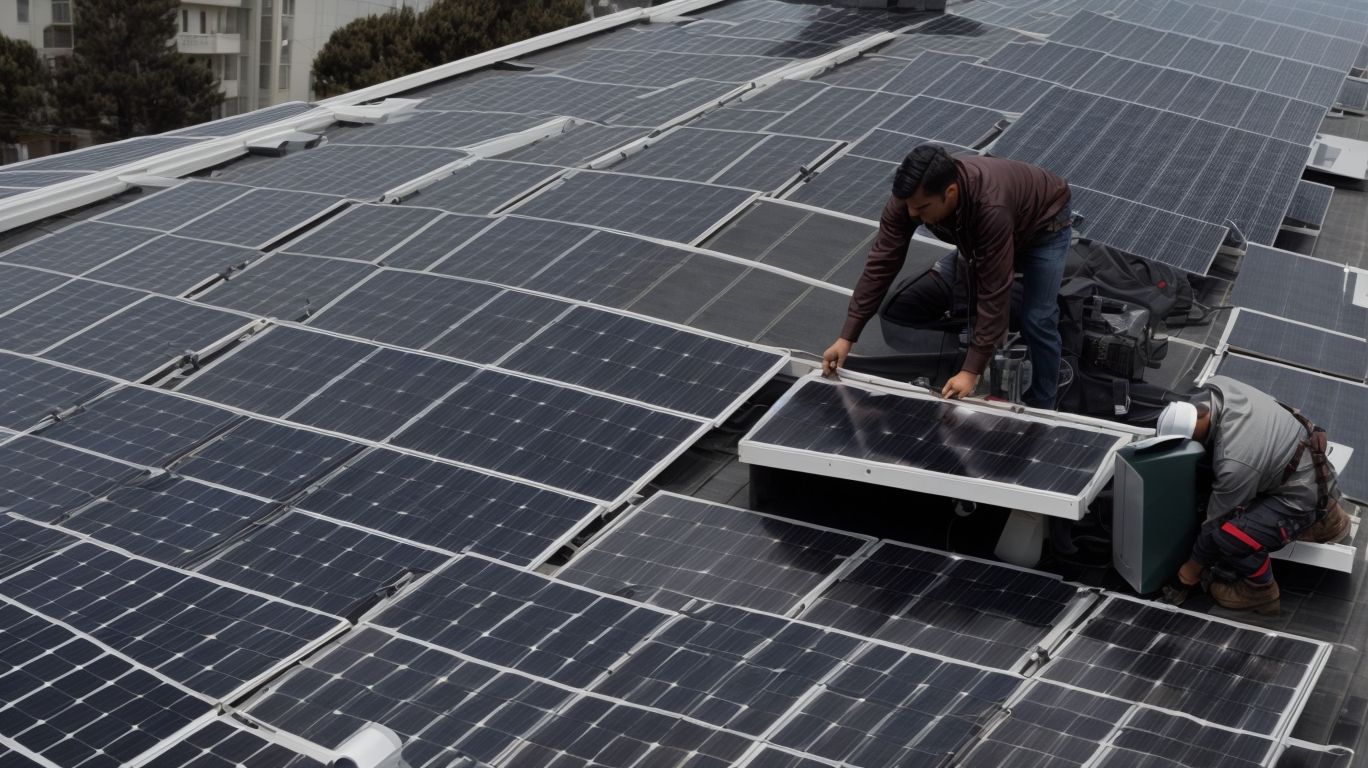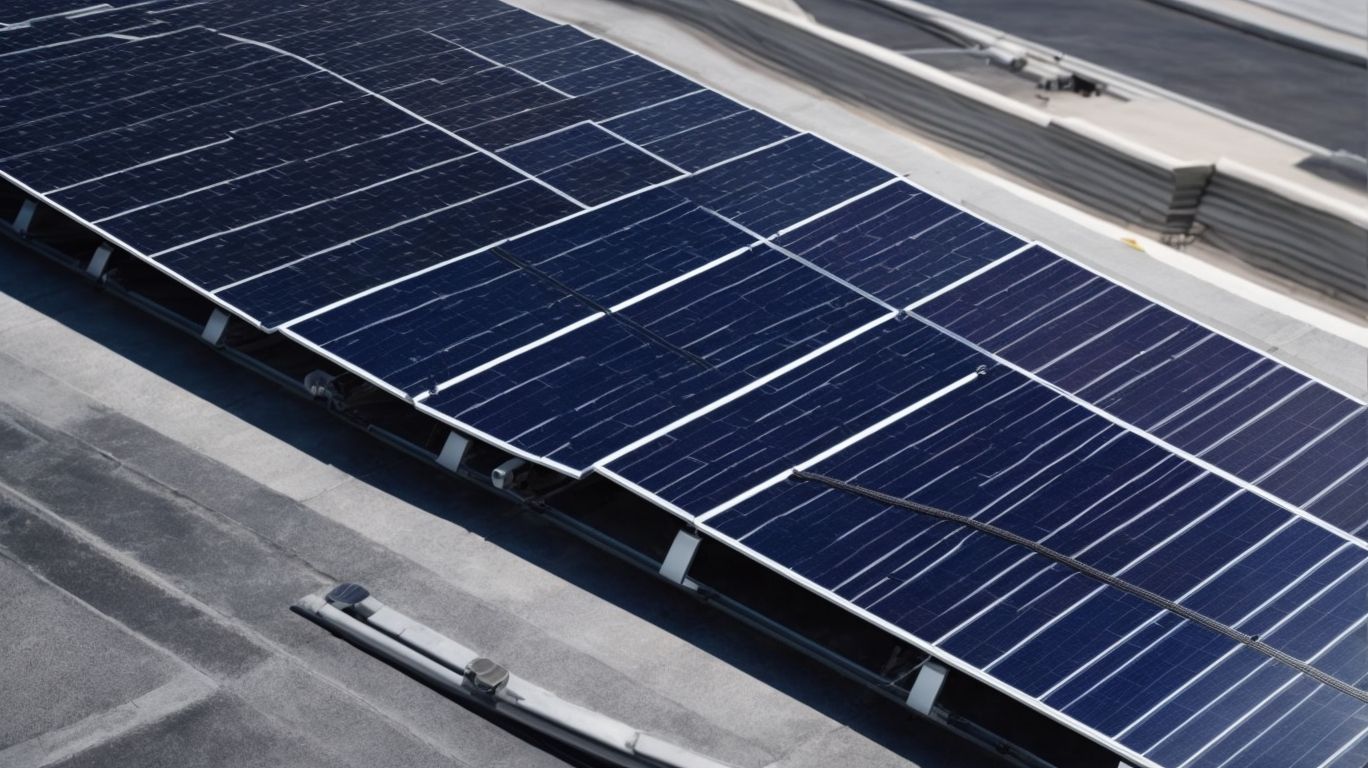
Solar Panel Support in San Francisco: Structural Engineering for Sustainable Power
Solar panel support structures play a crucial role in harnessing sustainable energy from the sun. In a city like San Francisco, where environmental consciousness is a priority, the importance of these structural elements cannot be overstated. This article will delve into the significance of structural engineering in solar panel support, the benefits of utilizing such support systems, and the various types of support structures available. We will also explore the factors to consider when installing solar panel support in San Francisco, as well as the pivotal role of structural engineering in ensuring the safety and efficacy of these systems.
We will outline the steps involved in the installation process, from site assessment and planning to obtaining permits and approvals, ultimately highlighting the integral role that structural engineering plays in the sustainable energy landscape of San Francisco.
What Is Solar Panel Support?
Solar panel support refers to the structures and systems designed to securely mount and hold solar panels in place, ensuring their optimal performance and longevity.
These support structures play a crucial role in safely anchoring solar panels to various surfaces, such as rooftops, ground mounts, or pole mounts. The proper installation and placement of support systems are vital to withstand environmental elements, including wind, rain, and snow loads, while maximizing sun exposure for efficient energy production.
There are different types of support structures, such as fixed, adjustable, or tracking systems, each serving specific purposes based on geographic location and solar panel orientation. By providing stability and protection, solar panel support ensures the seamless integration of solar technology into diverse landscapes and architectural designs.
Why Is Structural Engineering Important for Solar Panel Support?
Structural engineering plays a critical role in ensuring the safety, stability, and durability of solar panel support systems, addressing the unique structural requirements and load-bearing considerations associated with solar panel installations.
It involves the meticulous analysis and design of support structures to withstand environmental loads, such as wind, snow, and seismic forces, ensuring that the solar panels remain securely anchored. Compliance with regional building codes and regulations is vital to guarantee the structural integrity and safety of the entire solar panel array.
Through innovative structural engineering solutions, engineers can optimize the design to maximize the use of sustainable materials and enhance the efficiency of the solar panels, contributing to a more sustainable and resilient energy infrastructure.
What Are the Benefits of Using Solar Panel Support?
Utilizing solar panel support offers numerous benefits, including access to sustainable and renewable power sources, cost-effectiveness, low maintenance requirements, and eco-friendly energy production with minimal environmental impact.
It allows individuals and businesses to become less reliant on traditional fossil fuels, reducing their carbon footprint and contributing to the fight against climate change. Solar panels offer energy independence, providing a secure and reliable source of power that is not subject to the fluctuating costs of conventional electricity.
By harnessing the power of the sun, solar panel support systems enable efficient and clean energy production, promoting a greener and more sustainable future for all.
Sustainable Energy Source
Solar panel support promotes the use of solar energy as a sustainable power source, harnessing renewable energy from the sun to drive eco-friendly electricity generation and reduce dependence on traditional fossil fuels.
This form of support plays a crucial role in facilitating the transition towards a more sustainable energy mix. By enhancing the efficiency and effectiveness of solar panels, it enables a greater harnessing of sunlight, thus expanding the scope and potential of renewable energy sources. This is instrumental in achieving broader sustainability objectives, such as reducing carbon emissions and mitigating climate change impacts, aligning with global efforts to create a greener and more environmentally friendly energy landscape.
Cost-effective
The use of solar panel support structures offers a cost-effective solution for energy production, contributing to economic viability through reduced utility expenses, potential incentives, and long-term savings on energy costs.
By harnessing solar energy, businesses and households can significantly decrease their dependence on traditional grid systems, thereby mitigating the impact of rising electricity prices. Government incentives and tax credits for solar installations can further enhance the financial benefits, making it an appealing investment.
The long lifespan of solar panels and minimal maintenance requirements contribute to substantial cost savings over the system’s lifetime, bolstering its economic attractiveness.
Low Maintenance
Solar panel support systems require minimal maintenance, offering long-term performance without significant upkeep, resulting in reliable energy production and reduced operational costs.
This low maintenance requirement of solar panel support contributes to their overall operational efficiency, making them an attractive choice for renewable energy solutions. By reducing the need for frequent maintenance, solar panel support systems not only provide consistent energy output but also help in extending their service life. This reliability adds to the overall cost-effectiveness of solar energy systems, benefiting both residential and commercial users in terms of sustainability and financial savings over the long run.
Environmentally Friendly
Solar panel support contributes to environmentally friendly energy production, reducing carbon footprint and environmental impact while supporting sustainable development and eco-friendly practices.
By harnessing the power of sunlight, solar panels generate clean energy without emitting harmful greenhouse gases, thus playing a pivotal role in mitigating climate change. Their deployment aids in preserving natural resources and ensures a healthier planet for future generations. Solar power systems are integral to reducing dependence on non-renewable energy sources, promoting energy independence and fostering a more sustainable and resilient energy infrastructure.
What Are the Types of Solar Panel Support Structures?
Solar panel support structures encompass various types, including:
- Ground mount systems, commonly used in large-scale solar installations on open land, offering flexibility in orientation and tilt angles.
- Roof mount systems, ideal for residential or commercial rooftops, where space may be limited. They require specialized mounting equipment and must account for the roof’s structural integrity.
- Pole mount systems, suitable for areas with limited ground space, providing versatility in positioning the panels for optimal sunlight exposure.
The choice of support structure depends on factors such as available space, orientation, local building codes, and aesthetic considerations.
Ground Mount Systems
Ground mount systems for solar panel support involve the installation of panels on the ground, offering flexibility in design, engineering solutions for various terrains, and optimal exposure to solar technology.
This approach allows for the placement of solar panels in areas where roof-mounted systems may not be suitable, maximizing their potential in harsh weather conditions and uneven landscapes. The flexible design of ground mount systems promotes efficient utilization of available space, enabling customization to meet specific energy needs and contributing to a more sustainable energy infrastructure.
These systems often incorporate innovative engineering solutions to address soil composition, wind resistance, and maintenance accessibility, making them a reliable and cost-effective choice for solar power generation.
Roof Mount Systems
Roof mount systems provide a popular method for solar panel support, involving secure attachment to building roofs, requiring considerations for roof design, structural stability, and load-bearing capacity.
As an integral component of solar panel installations, roof mounts must accommodate the weight of the panels and withstand various weather conditions. Factors such as roof pitch, material, and orientation play a crucial role in determining the feasibility of roof mount systems. The structural integrity of the building’s roof must be assessed to ensure that it can bear the additional weight and pressure exerted by the mounted solar panels. These considerations are essential to ensure the long-term effectiveness and safety of the solar panel system.
Pole Mount Systems
Pole mount systems offer versatile solar panel support by utilizing pole structures, addressing considerations for wind load, solar panel angle optimization, and environmental factors impacting pole-mounted installations.
These systems are known for their adaptability, as they can be installed in various terrains and locations, making them an ideal choice for residential, commercial, and off-grid applications. When it comes to wind load, pole mount systems are designed to withstand strong gusts, with specific engineering to ensure stability. The orientation of solar panels on the poles can be optimized for maximum sunlight exposure, enhancing energy production. Notably, pole mount systems also have a minimal environmental impact, as they often require less ground disturbance compared to other mounting options, making them a sustainable choice for solar installations.
What Are the Factors to Consider for Solar Panel Support?
Several critical factors influence solar panel support, including location and climate considerations, adherence to building codes and regulations, and the application of suitable solar technology for optimal energy production.
The geographical location plays a crucial role in determining the potential solar energy yield. Areas with abundant sunlight and minimal shading are ideal for maximizing solar panel efficiency. Climate variations must be taken into account to ensure the durability and performance of the panels.
Regulatory compliance, encompassing permits, zoning laws, and interconnection standards, is paramount for a successful solar installation. Selecting the right solar technology, such as photovoltaic panels or concentrated solar power systems, is equally essential to achieve the desired energy output.
Location and Climate
The location and climate play a crucial role in solar panel support, impacting considerations such as solar panel orientation, seismic requirements, and environmental factors that influence installation stability.
The geographical placement of solar panels affects their exposure to sunlight, influencing the efficiency of energy production. In regions with frequent seismic activities, the support structures need to be designed to withstand potential earthquakes, ensuring the safety and longevity of the solar panels.
Environmental factors like wind patterns and precipitation levels must be taken into account to determine the optimal angle and tilt of the solar panels for maximum energy capture.
Roof Condition and Orientation
Assessing the roof condition and orientation is essential for effective solar panel support, involving considerations for roof design, solar panel angle optimization, and structural compatibility with the existing building structure.
Understanding the condition of the roof, such as its age, material, and structural integrity, is crucial as it determines the feasibility and safety of installing solar panels. The orientation of the roof plays a significant role in maximizing the solar panel’s exposure to sunlight, impacting energy production. The roof design influences the installation process and the arrangement of solar panels, requiring careful planning to ensure optimal performance and structural integration. By evaluating these factors, homeowners and businesses can make informed decisions regarding solar panel installation and achieve long-term energy efficiency.
Building Codes and Regulations
Adhering to building codes and regulations is a fundamental aspect of solar panel support, requiring comprehensive understanding of permitting processes, regulatory compliance, and coordination with local authorities for approval.
Ensuring compliance with building codes is essential to guarantee the structural integrity and safety of solar panel installations. The permit approval process involves submitting detailed plans and specifications to the local authorities, demonstrating that the installation adheres to safety standards and zoning regulations. Engaging with local authorities fosters a collaborative approach, enabling smooth coordination and timely approval.
Regulatory compliance ensures that the solar panel systems are installed in a manner that minimizes environmental impact and maximizes energy efficiency, contributing to sustainable development and meeting community expectations.
How is Structural Engineering Used in Solar Panel Support?
Structural engineering is integral to solar panel support through its application in structural analysis and design, load calculations, material selection, and overseeing construction activities to ensure the structural integrity of the support systems.
It plays a crucial role in assessing the loads and forces exerted on the support structures, ensuring they can withstand environmental conditions and the weight of the solar panels. Structural engineers also contribute to the selection of appropriate materials, considering factors like durability, corrosion resistance, and cost-effectiveness in the context of long-term functionality.
They provide valuable oversight during the construction phase, ensuring that the support systems are assembled and installed according to the designed specifications and industry standards for optimal performance and safety.
Structural Analysis and Design
Structural analysis and design form the foundation of solar panel support, incorporating considerations for load bearing, seismic requirements, and ensuring the overall structural stability of the support systems.
By conducting a comprehensive structural analysis, engineers can determine the optimal support structure for solar panels, taking into account factors such as wind loads, snow loads, and potential seismic activity.
The design phase involves creating a robust framework that can withstand environmental forces while ensuring the long-term stability of the solar panel support. Integrating load-bearing considerations into the design process is crucial for distributing the weight of the panels effectively and minimizing any deformation or stress on the support structure.
Load Calculations
Conducting precise load calculations is essential for solar panel support, addressing factors such as structural stability, wind load, and ensuring the adequate load-bearing capacity of the support structures.
It is crucial to consider the weight of the solar panels, as well as the distribution of this weight across the support structure. Load calculations allow for the assessment of potential stress points and weak areas, helping to optimize the design and placement of the support system.
By accounting for wind load, engineers can determine the additional forces exerted on the panels and their supports, ensuring that the entire system can withstand varying weather conditions. This meticulous approach to load calculations plays a vital role in the long-term performance and safety of solar panel installations.
Material Selection
Careful material selection is crucial for solar panel support, involving considerations for roof design, structural compatibility, and the suitability of materials for prolonged exposure to environmental elements.
It is essential to factor in the weight, pressure, and potential wind loads that the support materials will need to bear, as this can significantly impact the structural integrity and safety of the installation. The thermal expansion and contraction properties of the chosen materials must align with the demands of the local climate to ensure long-term durability. The selection of environmentally sustainable and corrosion-resistant materials can also contribute to the overall efficiency and lifecycle of the solar panel system.
Construction Oversight
Providing construction oversight is essential for solar panel support projects, ensuring compliance with regulatory standards, adherence to project management best practices, and delivering high-quality, safe installations.
This oversight involves thorough inspections of the construction process, from the foundation to the mounting of solar panels, to ensure that each step meets industry standards and safety regulations. Effective oversight facilitates proactive problem-solving, mitigating potential setbacks and delays. It also plays a crucial role in maintaining cost efficiency by monitoring the project’s progress and addressing any deviations from the original plan in a timely manner.
What Are the Steps to Install Solar Panel Support?
The installation of solar panel support involves sequential steps, including:
- Site assessment and planning
- Structural design and engineering
- Obtaining permits and approvals
- The actual installation and connection of the system to the power grid
During the initial phase of the process, the site assessment is crucial in determining the location’s suitability for solar panel installation, considering factors such as sunlight exposure and potential obstructions. This is followed by detailed structural design and engineering to ensure that the support system can withstand environmental conditions and securely hold the panels.
Obtaining necessary permits and approvals from local authorities is essential to comply with regulations, and finally, the installation involves mounting the panels and connecting them to the electrical components for efficient utilization of solar energy.
Site Assessment and Planning
Conducting thorough site assessment and planning is the initial phase of solar panel support projects, requiring collaboration, effective communication, and comprehensive evaluation of installation requirements.
This crucial phase involves evaluating factors such as the site’s solar access, shading, and structural integrity to determine the optimal placement and support of solar panels. Effective communication between stakeholders, including engineers, designers, and installation teams, is vital to ensure that the project meets all functional and safety requirements. A comprehensive assessment also considers local building codes, zoning regulations, and environmental factors to guarantee a seamless and compliant installation process.
Structural Design and Engineering
The structural design and engineering phase of solar panel support projects require professional expertise, innovative engineering solutions, and adherence to industry standards to ensure the structural integrity and performance of the support systems.
This phase encompasses the intricate planning and implementation of support structures that can withstand environmental pressures, maximize solar exposure, and minimize maintenance needs. Without proper attention to design and engineering, solar panel support systems may be vulnerable to structural failures, reducing the longevity and efficiency of the entire solar array. Professional engineers play a vital role in creating solutions that not only meet industry standards but also optimize the functionality and durability of solar panel support, ultimately contributing to the success of renewable energy initiatives.
Obtaining Permits and Approvals
Securing permits and approvals is a critical step in solar panel support projects, requiring compliance with building codes, regulatory standards, and coordination with local authorities for successful permit acquisition.
It is essential to understand the permit approval processes, which often involve submitting detailed plans, completing necessary paperwork, and adhering to specific guidelines set by local authorities.
Building code compliance ensures that the installation meets safety and structural requirements, which is imperative for the efficient functioning of the solar panels. Engaging with local authorities fosters a collaborative approach, promoting transparency and addressing any concerns they may have about the installation process.
Installation and Connection to Power Grid
The final stage of solar panel support involves the installation and connection of the system to the power grid, integrating grid integration components, solar inverters, and implementing system monitoring for performance analysis and maintenance.
This phase is crucial for ensuring that the solar panel system operates efficiently and effectively. Grid integration plays a vital role in enabling the generated solar power to be seamlessly integrated with the existing power grid.
The installation of solar inverters is essential as they convert the direct current (DC) generated by the solar panels into alternating current (AC) for use in homes and businesses. System monitoring allows for real-time performance analysis, identifying any issues or inefficiencies, and ensuring the maintenance of the system for optimal functionality.




No Comments